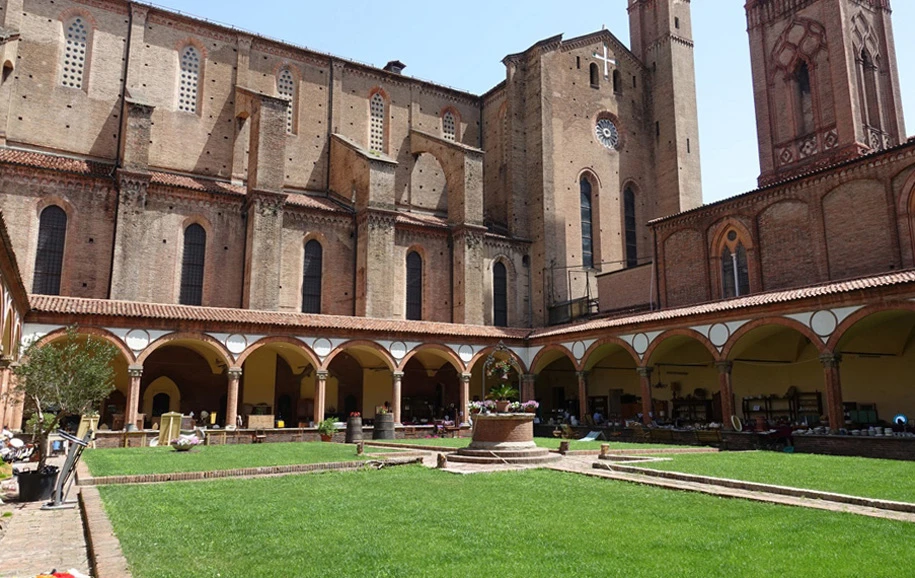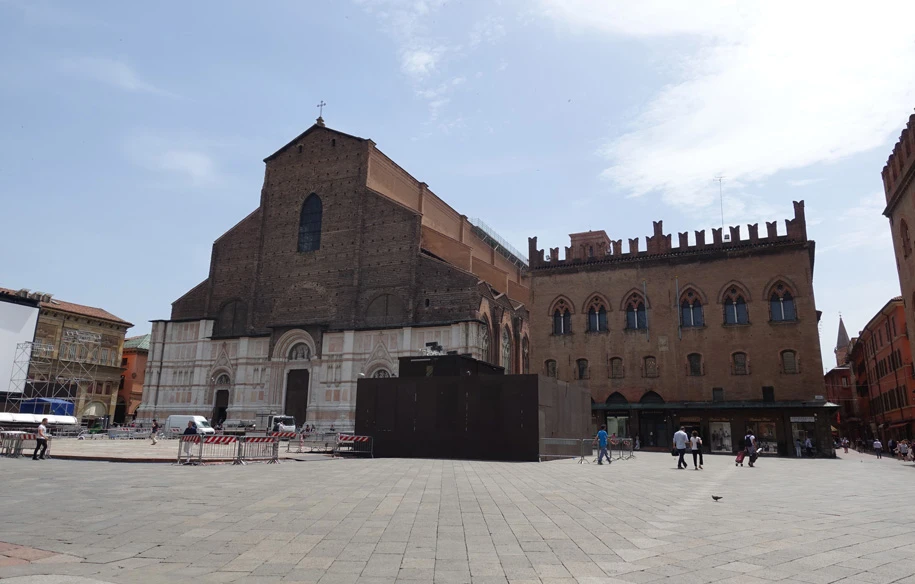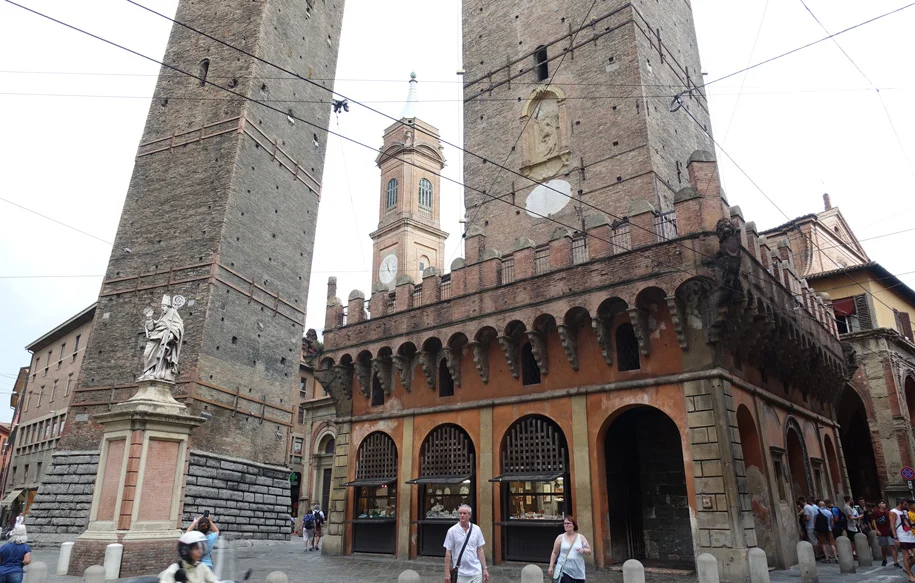
Basilica of San Domenico, Bologna (Basilica di San Domenico)
The Basilica of San Domenico (Basilica di San Domenico) is one of the important churches in Bologna, located in the historic center of the city on the square of the same name San Domenico (Piazza S. Domenico).
Pretty impressive size square, according to the standards of the center of Bologna, which lie in front of the Church is paved with pebbles, as it was in the middle ages.
In the centre of the square stands the brick column, adorned with a bronze statue of St. Dominic (1627).
On the back of the square is the column of "Madonna of the rosary", made of marble, bricks and copper project by Guido Reni (1632). The column was set to mark the end of plague in Bologna.
Also on the square are: the tomb Rolandino de Passeggeri (Arca di Rolandino de' Passeggeri, 1305) and Egidio Foscarini tomb (Arca Di Egidio Foscherari, 1289), enriched with an ancient Byzantine marble arch with relief works in the 9th century.
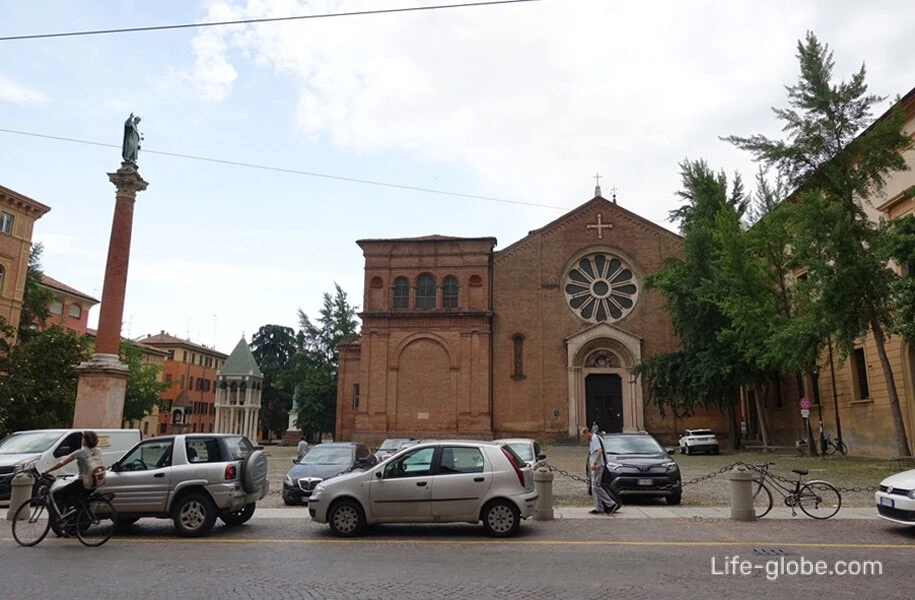

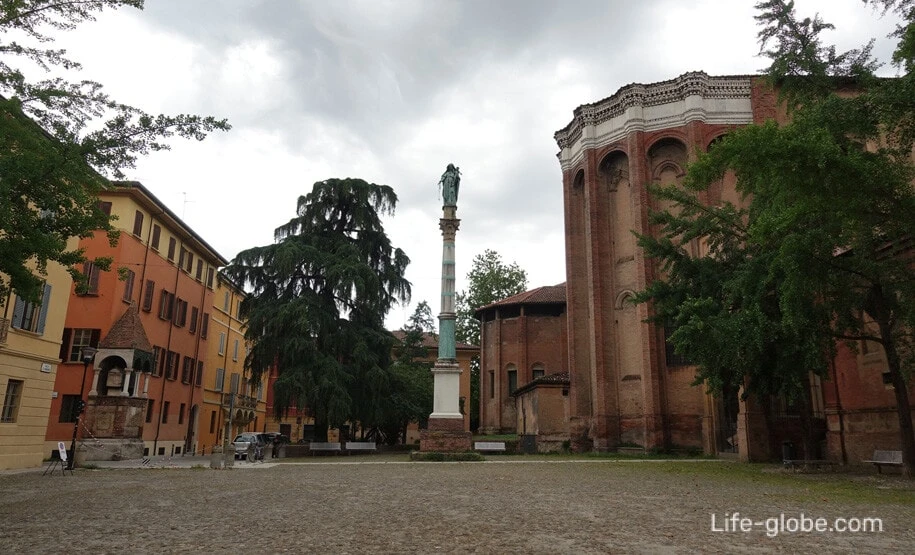
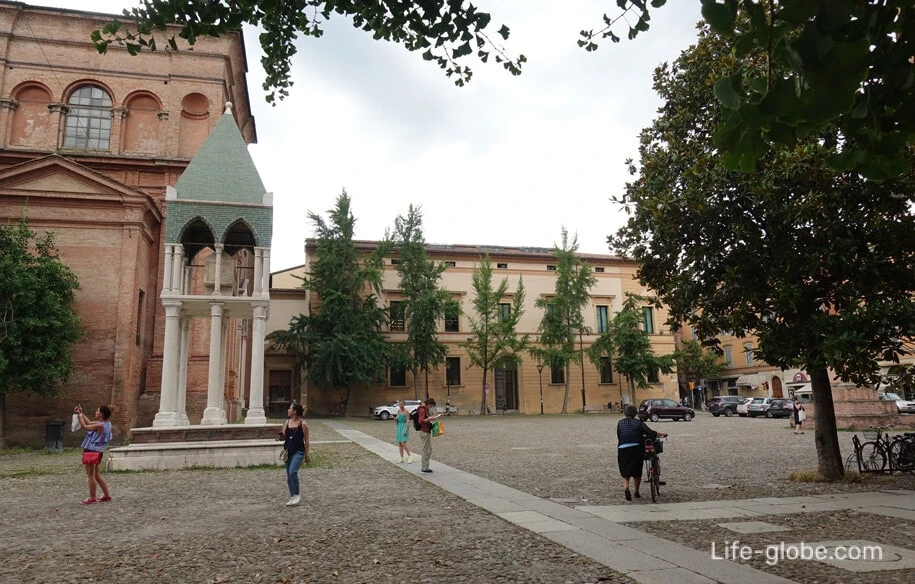
The Church of San Domenico was dedicated to St. Dominic, the founder of the order of preachers (Dominicans or the Dominican order).
Dominic Guzman arrived in Bologna in January 1218 acquired the Church of San nicolò delle Vigne, where now is the Basilica. After the death of Domenica (August 6, 1221), the monks decided to build a big Church where they could honor the memory of the Saint.
The Church was expanded and a new monastic complex was built between 1228 and 1240 years. The apsidal area of the Church of San nicolò was demolished and the nave was extended and converted into the Basilica of St. Dominic. The "new" Shrine became the prototype of many other Dominican churches throughout the world.
Now the facade of the Basilica of San Domenico features a simple Romanesque style and dates back to 1240 with restoration works in 1910. In the center of the facade, above the main entrance there is a large "rose window". The lunette above the portal contains a copy of the mosaic (1921) depicting St. Dominic blessing Bologna city.
The main facade of the Basilica of St. Dominic on the left side is bordered by chapel, Ghisilardi (style Renaissance), added in the 16th century, and on the right is the construction of the Patriarchal monastery of St. Domenica (Patriarchal Monastery of San Domenico).
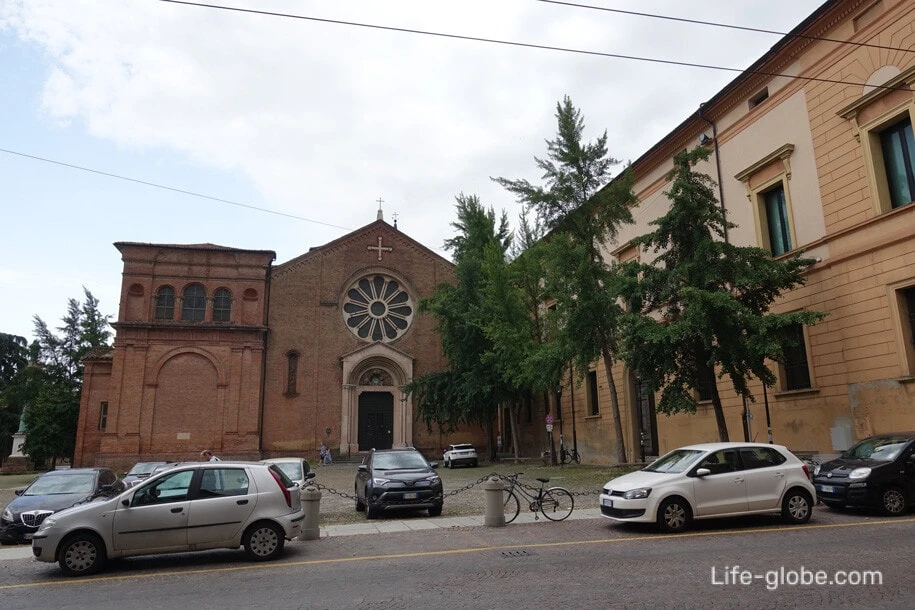
Cathedral - side view

The inner part of the Basilica was restored in 1727-32 the years, Carlo Francesco Dotti, bringing together two medieval buildings into a single bright building.
The interior of the Church made in the Baroque style, it is possible to allocate three naves (one Central and two side aisles), several side chapels, transept, choir and apse.
In the lunettes of the nave, above the ionic columns are 10 paintings, depicting episodes (true and false) from the history of the Church. The first two work by Giuseppe Pedretti (1697 - 1778) was, the rest of Vittorio Bigari (1692 - 1776 years).
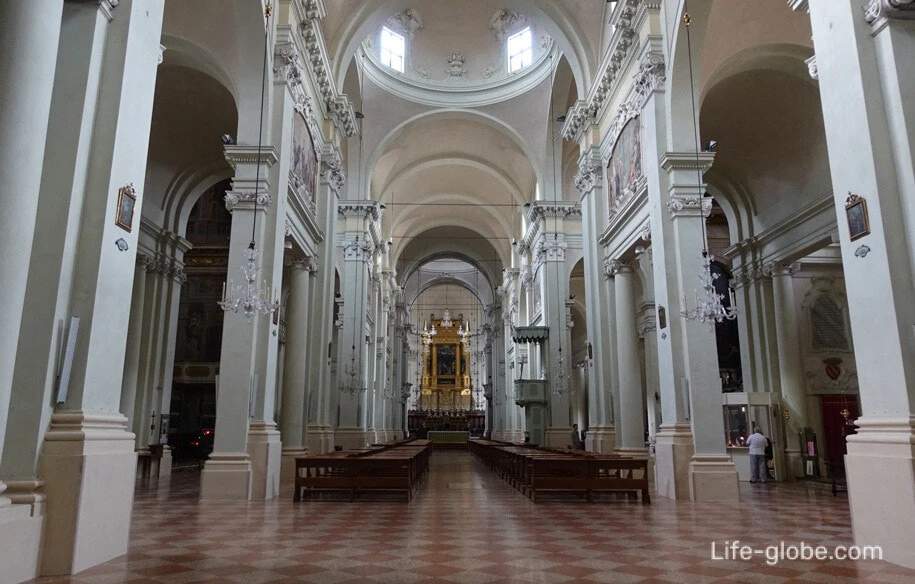
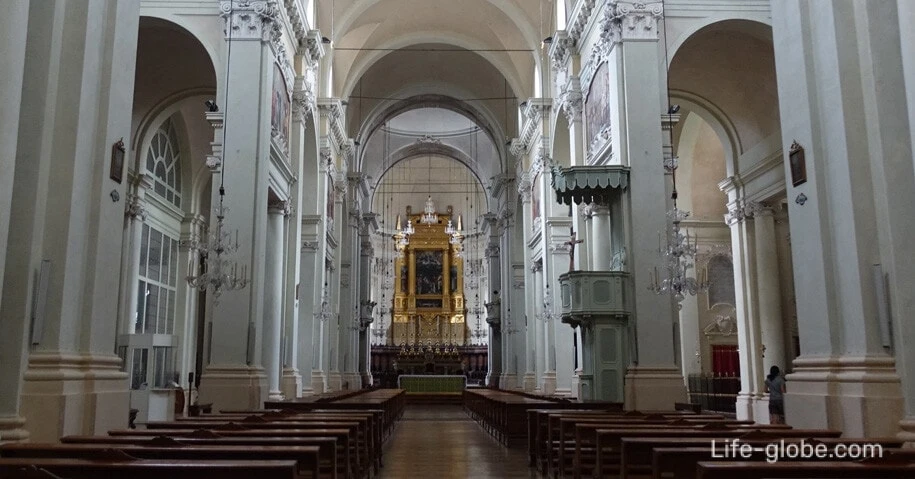
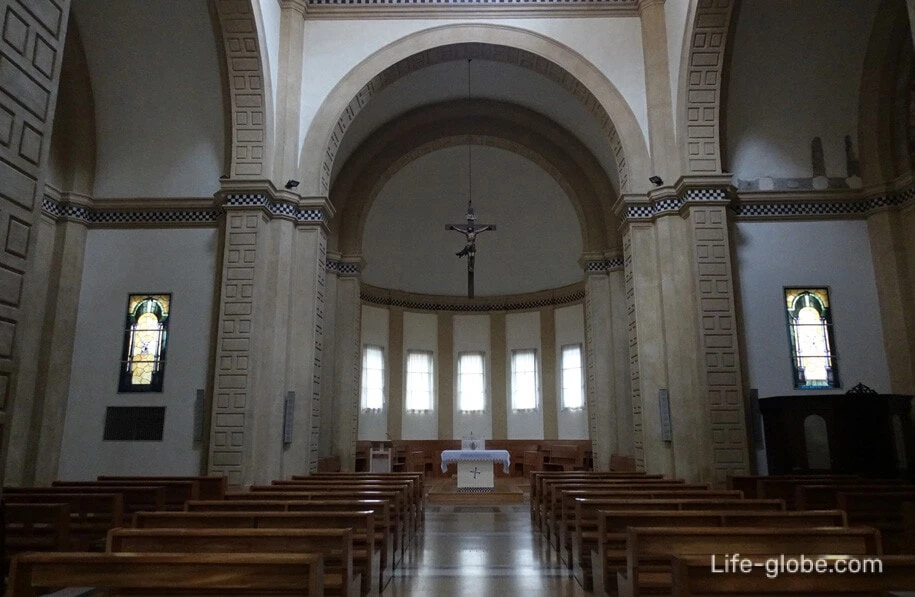
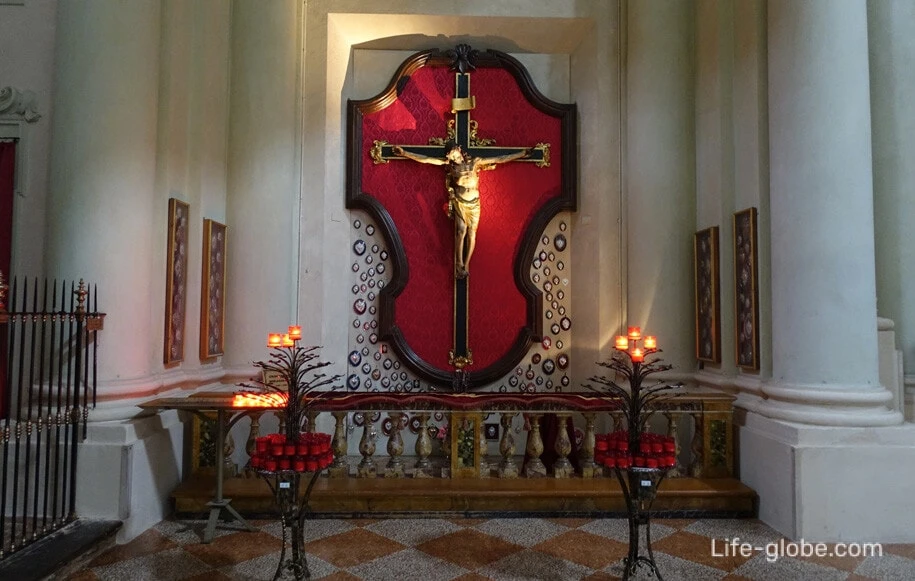
A wooden choir of the Renaissance, created by fra Damiano da Bergamo, was identified by contemporaries as the 8th wonder of the world, they also admired Carl V.
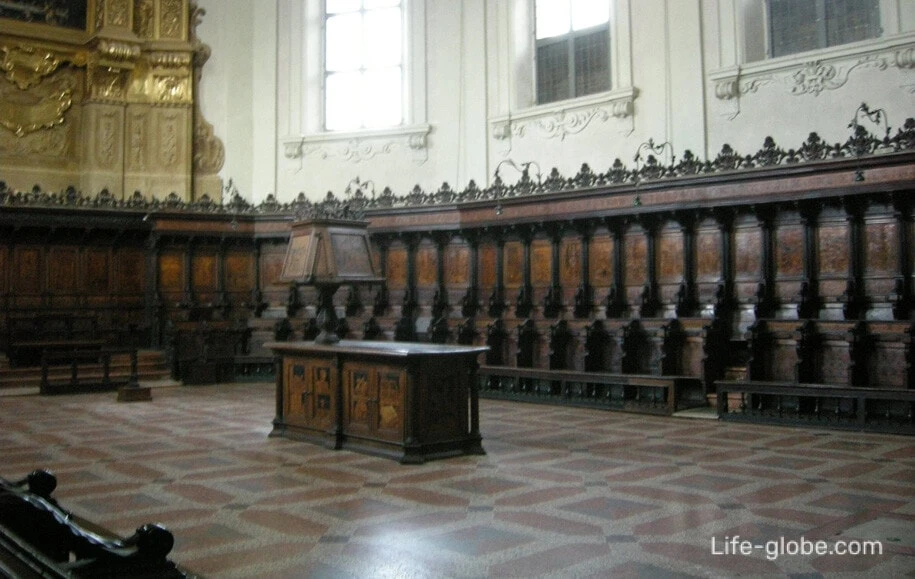
Of the chapels of the Basilica it is possible to allocate:
- the chapel of St. Dominic, where in a marble ark, the remains of the Saint.
Initially the remains Domenica was placed in a simple marble sarcophagus, situated on the floor in the right aisle of the Church. Later, as came many pilgrims, to see the tomb, most of which, just could not see the grave, because of the large number of people standing in front - there is a need in the new Shrine.
The development of the chapel of St. Domenica, now artistic masterpiece, was performed in separate stages by the best sculptors of his time and took almost 500 years.
The remains of the Saint were transferred to a new sarcophagus - an Ark of St. Dominic (Arca di San Domenico / Arca di San Domenico), which can be seen today. The sarcophagus is decorated with marble sculptures and is considered one of the finest examples of Italian art of those times;
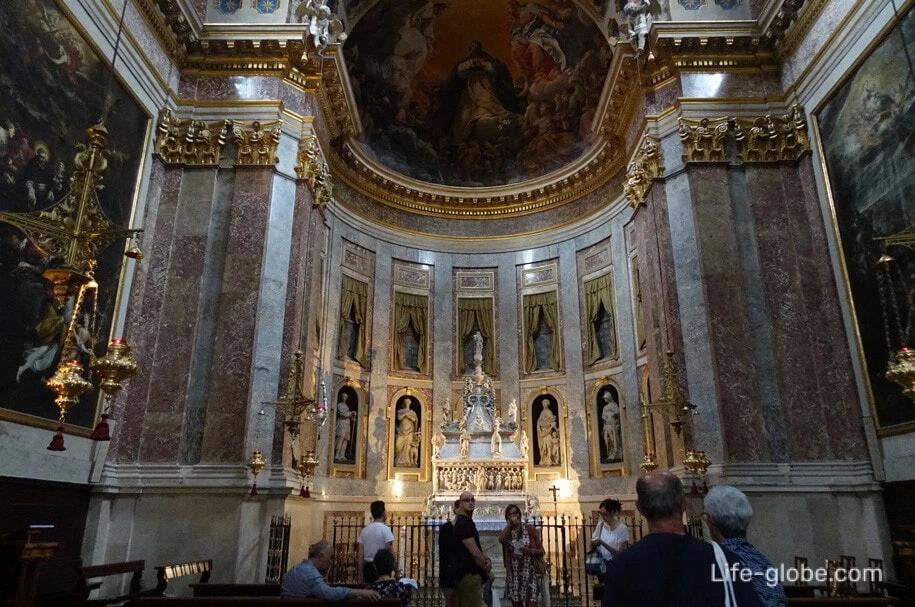
- chapel rosary - chapel with beautiful frescoes on the vault (the assumption) and in the apse (Heaven and Earth praising the Madonna of the rosary), written between 1655 and 1657 years Angelo Michele Colonna and Agostino Mitelli.
The decor of the chapel worked by the most prominent artists of his time. Two choir stalls were designed by the architect Carlo Francesco Dotti in 1736 after the redevelopment of the interior of the Church. The altar was designed by the Bolognese architect Floriano Ambrosini.
The original chapel, located on the site of the chapel "rosary", was commissioned by the nobleman Giovanni Guidotti as a chapel for his family. In the second half of the sixteenth century the chapel was received from the Brotherhood of the Holy rosary, established by the Dominican order in the previous century (the practice of Prayer of the rosary was introduced by Dominique). On that occasion, the chapel changed its name to "the Chapel of the rosary" in honor of "Madonna del Rosario" or "the rosary".
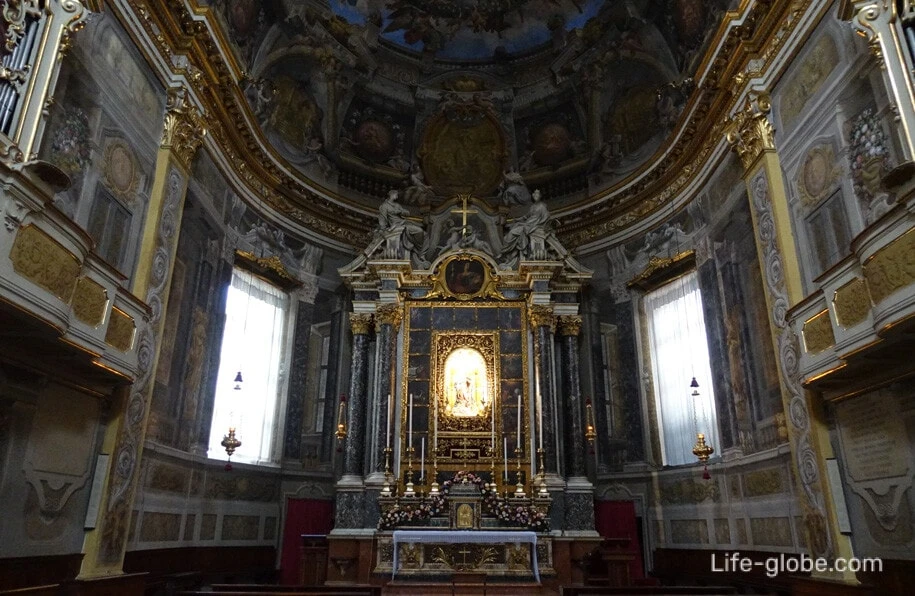
Basilica of San Domenico has a small Museum which houses works of art and religious relics.
The monastery of San Domenico contains the cloisters 14th to 16th centuries, with tombstones and plaques on the walls. The fresco of St. Dominic, Dating from the 14th century, is also located in the monastery - the oldest known image of the Saint.
On the first floor of the old Dorm is the cell of St Domenica, say, which have remained unchanged and perhaps in that cell died notice.
Library of San Domenico, also located in the monastery associated with the Theological school run by the monastery. The library contains a collection of 35 ancient choral books written on parchment. Part of the library complex at present is the seat of the faculty of philosophy and theology, run by the Dominicans.
In the library is a room designed in the Renaissance style with stucco, Antonio Maria Fountains. The room was created in 1497 Ludovico lawyer Bolognini.
All accommodation facilities in Bologna, from budget to luxury, you can view and book here




